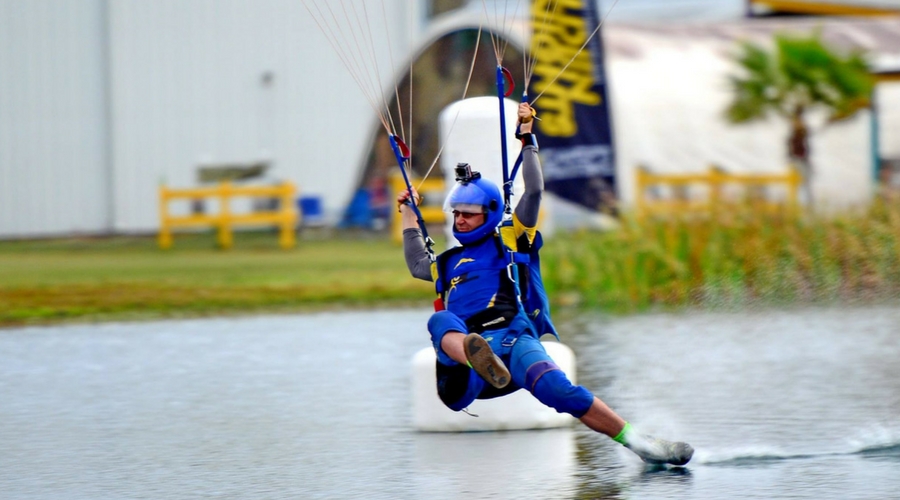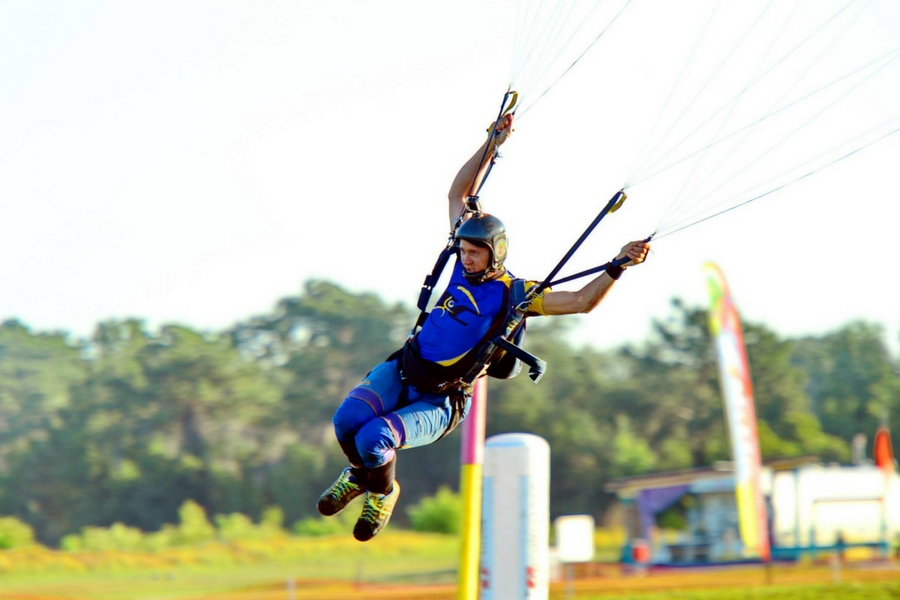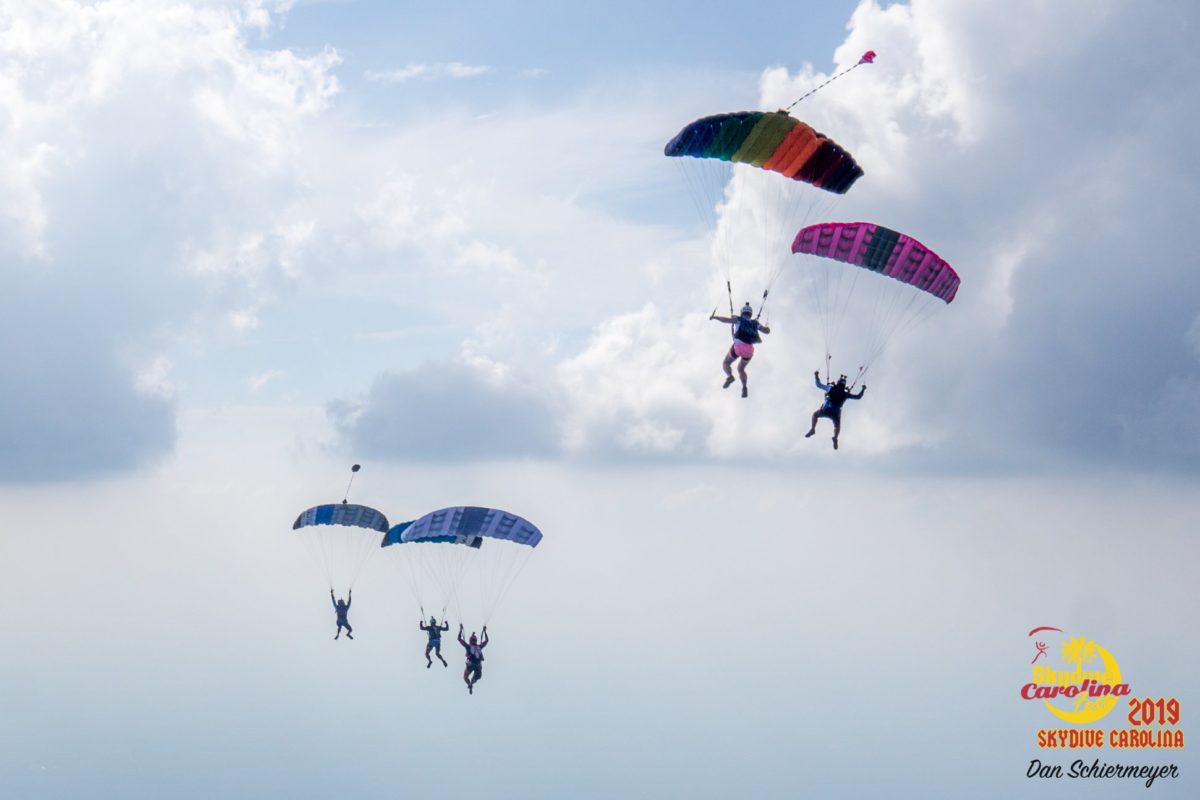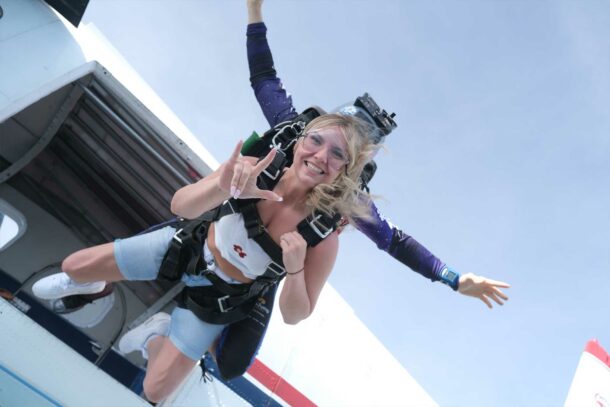Swooping In Skydiving Explained
Thursday, June 13, 2024
Swooping in Skydiving
Skydiving swooping: it’s the high-speed, adrenaline-pumping art form that truly takes skydiving to the next level. Imagine skimming gracefully across the ground (or a glassy pond) at breathtaking speeds, executing majestic turns, and flying your canopy with a finesse that leaves spectators’ jaws on the floor. A skydive swoop allows you to make these visions a reality!
Join us as we explore the intricate world of skydive swooping, talk about the parachutes that make it possible, and how it differs from traditional skydiving landings.

What Does Swooping Mean In Skydiving?
What is swooping in skydiving? Is it as intimidating as it sounds? Well, yeah! Swooping in skydiving is a high-speed landing technique where the skydiver uses a specialized canopy and intentional speed-inducing maneuvers (turns) to glide close to the ground at thrillingly fast speeds.
Why in the world would people want to do this? Like most things in skydiving – it’s awesome! Aside from being top-notch fun, swooping is riveting. It’s electrifying, community-based, and challenging. Swooping is something few master, and the sheer level of discipline it takes to strive toward mastery excites people.
How Do You Swoop When Skydiving?
Can anyone toss on a skydiving rig and begin their swooping journey instantaneously? Nope! Can tandem skydiving pairs swoop when they land!? AHH!! No way! For those eager to learn how to swoop skydiving, mastering canopy control and understanding the dynamics of your wing are essential steps in the “how to swoop” journey.
Swooping is pursued by seasoned and advanced skydivers. Due to the nature of a swoop, having a vast amount of time in the sport, and subsequently, a high number of parachute landings, is necessary.

Are Swooping Parachutes Different?
Logistically speaking, how does swooping work, and what is the swooping landing maneuver? Without getting too technical, let’s have a short lesson on canopy dynamics!
Modern-day canopies, specifically those used for high-performance landings (AKA, swooping), are designed with precision and agility in mind. The front of a parachute called the nose, is actually open – think of a pillowcase with one side open and the other closed. Upon deployment, this opening fills with air, and the crossports between the cells of the canopy allow that air to travel throughout the canopy to inflate it. This allows the skydiver to glide smoothly through the air with intention.
High-performance canopies are smaller and have more curvature to their design. This trim enables them to have a steeper dive and cut through the wind with increased speed. While this may sound super fun, the design of swooping parachutes also drastically decreases the margin of error for the skydiver. How? They’re twitchier!

What Is Wing Loading?
The wing loading in skydiving refers to the skydiver’s exit weight (their body weight + the gear they’re wearing) in relation to the surface area of the parachute they’re jumping. A higher wing loading indicates more weight per square foot of the parachute, resulting in a faster descent rate and a more responsive canopy to any input given by the skydiver. On the other hand, a lower wing loading will result in a slower rate of descent and is more forgiving.
What do we mean by more forgiving? We would really like to hit home on this point, as it is perhaps the #1 mistake we see when people begin jumping smaller wings – which is called downsizing. Generally speaking, when you have a lower wing loading, the canopy takes a shorter amount of time to recover from any input, and vice versa. Think about it this way: making a turn while driving a hefty RV takes a lot more input than it would in a sports car. When you make the turn in a sports car, a small amount of pressure on the wheel can make a big difference. Why? You’re going super fast in something super small – canopies work the same way!
It’s critical to downsize safely with the supervision and advice from an experienced canopy coach. Likewise, it’s important to speak with those who are in authoritative and experienced positions before seeking out a different type of canopy.
Is Skydiving Swooping Risky?
What is the most common cause of skydiving accidents? Contact with the ground, and unfortunately, most skydiving incidents are results of people pushing their personal limits and overestimating their abilities – such as learning to swoop before they are ready.
We’ll put it this way: skydiving is an extreme sport that holds an inherent level of risk – we’re jumping from freakin’ airplanes, here! When someone swoops and intentionally goes fast (rather than slowing down) the closer they get to the ground, the more the risk increases. This is why canopy courses from veteran swoopers are an absolutely, non-negotiable necessity for anyone looking to pursue the discipline as a part of their skydiving journey.
Ready to kickstart your jumping journey or dive into your swoop progression? We’ve got you covered – come jump with us today! Blue skies!
Related Article: Parachute Landings Explained
Copyright © 2024, Skydive Carolina, All Rights Reserved.
DropZone Web Design & Marketing by Beyond Marketing, LLC





